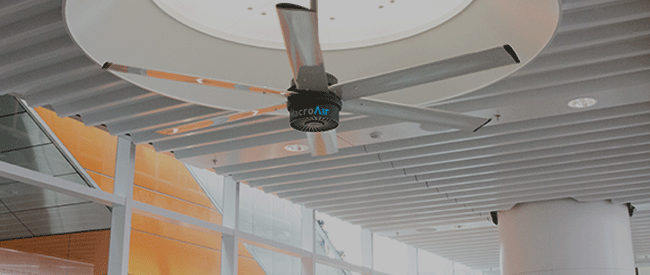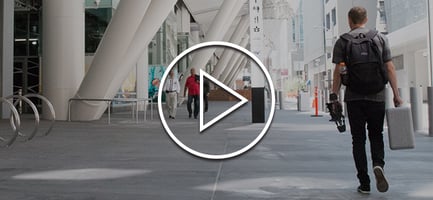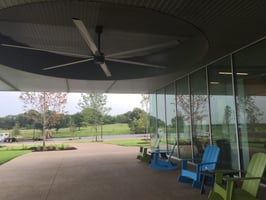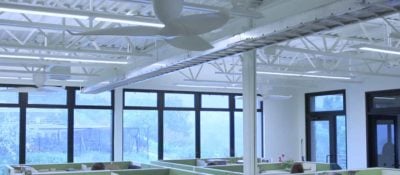In this episode of MacroAir’s Vlog you will experience the journey that our marketing team took...
Salesforce Transit Center Opens with MacroAir Large Ceiling Fans
Created as the “Grand Central Station of the West,” the Salesforce Transit Center is a $2.3 billion project that has been more than 10 years in the making. The transit center, which opened its doors to the public on August 12, 2018, is the latest in urban planning: a massive contemporary, sustainable space in the heart of the city.
“Salesforce Transit Center is a state-of-the-art multimodal transit station in downtown San Francisco.”- Project Architect, Pelli Clarke Pelli Architects
Little known facts about the Salesforce Transit Center:
- The Salesforce Transit Center will serve 11 transportation systems throughout the Bay Area.
- The center is 1.5 million square feet total; four levels above ground, two below.
- Once completed the belowground concourse level will be a train platform for California High Speed Rail.
- Lighting will be completely shut off during off-peak hours due to massive skylights designed into the structure.
- MacroAir fans activate automatically when CO2 levels are too high on the bus deck.
Using Large Fans to Depart from a Common Design
A fusion of a unique outdoor space with aesthetically pleasing, technologically advanced indoor space, the Salesforce Transit Center is an innovative merger of technology, art and sustainability. Every detail lends itself to the center’s alluring vision of a sustainable future.
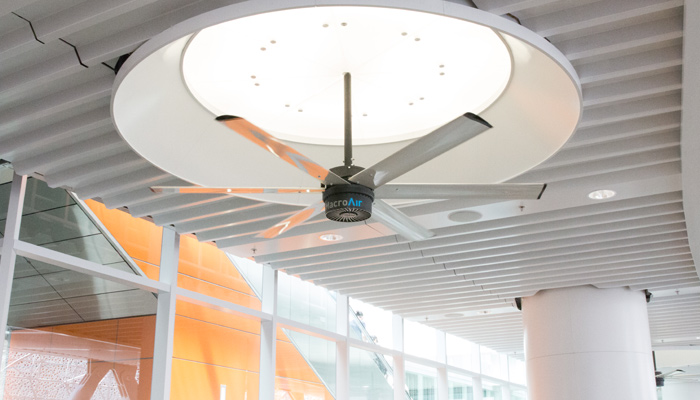
“What’s really special about this project is how a significant company like Salesforce created a landmark Transit Center—the “Grand Central Station of the West”—in such an influential city. To have our fans in a building of that scale and that is designed to be sustainable is really exciting.” – Mike Teruel, Digital Media Specialist, MacroAir
MacroAir large ceiling fans are just one part of Salesforce Transit Center’s investment in beautiful, functional design. The fans are used to ventilate the transport hubs and bus decks. As with every piece of technology in the transit center, MacroAir fans have a specific purpose that contributes to the overall function and look of the structure.
The 27 MacroAir large ceiling fans are integrated with the transit center’s Building Management Systems (BMS). The center’s CO2 sensors are tied into the BMS and can detect temperature and CO2 levels emitted from the buses that arrive at the center. Because the systems are integrated with the BMS, the BMS can activate the fans when CO2 levels or temperatures are too high.
The Salesforce Transit Center has much more control over the way MacroAir fans and the structure work together. This provides tremendous reductions in the amount of energy used to heat, cool or ventilate the transit center. The integrated fans are a key component that will increase comfort and air quality for the tens of thousands of commuters that are expected to pass through the transit center every day.
Sustainable from the Top to the Bottom
Similar to New York City’s High Line, the Salesforce Transit Center’s 5.4-acre public rooftop park is a critical part of the center’s operations. Just like the large ceiling fans in the interior of the structure, the trees and plants of the rooftop park help mitigate heat for energy management. The designers of the transit center have also incorporated drainage into the rooftop park for water conservation. With more than 600 trees and 16,000 plants, the ecosystem will capture 12 tons of carbon annually and provide sustainable water conservation.
On top of the sustainability, let’s not forget that the rooftop is a functional park as well. Visitors can always walk or jog length of the half-mile walking path around the park. There’s also an amphitheater on the western side, which will be used for performances and community activities.
Salesforce Transit Center’s rooftop park is an example of a fundamental change in the way structures can be designed in urban settings. Now more than ever, buildings like the transit center are required to consider factors like public art, human wellness and sustainability, especially if the structure serves as a gathering space for an entire city. With design concepts like a sustainable rooftop park and advanced large ceiling fans that provide better air quality, the transit center is more than an average commuter hub. The structure has become a dynamic destination that engages, enriches and connects people.
The Art of Engineering
From the curvature of the walls to the clean, sleek look of the 27 MacroAir large ceiling fans used to manage air quality, art is an important factor that transforms this commuter hub into an urban destination. The designers of the transit center made a conscious effort to mix original art pieces with technology and design factors that are creatively designed.

At ground level, Bay Area artist Julie Chang’s 20,000-square-foot floor mural, titled Secret Garden, blurs the line between function and art as you step across a beautiful art piece that is placed on the floor of the transit center.

Artwork by New York-based artistJenny Holzer, utilizes LED signs. Scrolling above the atrium, the digital piece titled White Light wraps throughout the Transit Center using a 182-foot-long LED screen displaying 16-foot-high text.
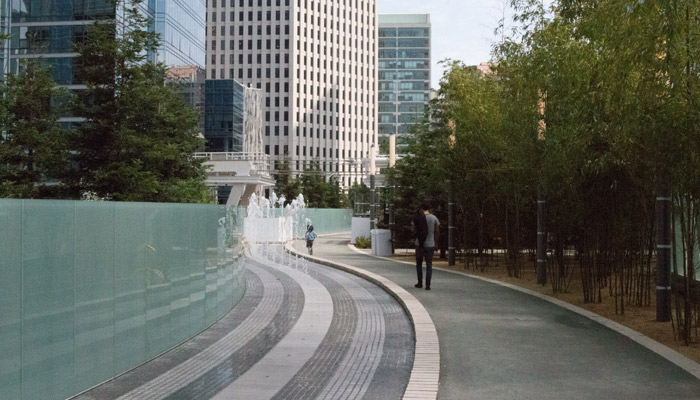
Bay Area artist Ned Kahn’sBus Jet Fountain, located on the rooftop park uses sensors and water jets to simulate the pattern in which buses move throughout the Transit Center.
Typically, public art is an afterthought in a structure’s design. In the Salesforce Transit Center, art pieces feel truly incorporated into the building. The center engages people with creative art like mosaic floors, light and water as commuters gather at the transit center for public transportation, events and community activities. The design of the transit center is a successful combination of an aesthetically pleasing structure and optimal functionality.
Destination Future
The Salesforce Transit Center will fundamentally change the way people connect between destinations in Southern California and those in Northern California. It will also change the way people feel when utilizing transportation centers. With plans to include a high speed rail terminal, retail stores, playgrounds, and cafes, the center will continue to push the boundaries of art and engineering with design factors like massive skylights, trees, plants, integrated art and technology like MacroAir large ceiling fans to bring people together.
Click the link below to learn more about how MacroAir Fans can play a key role in sustainable design
